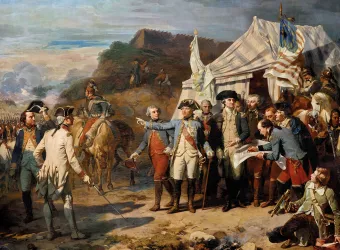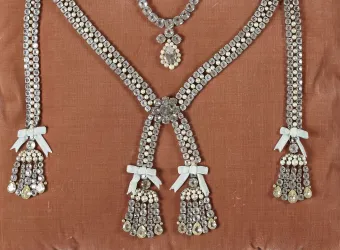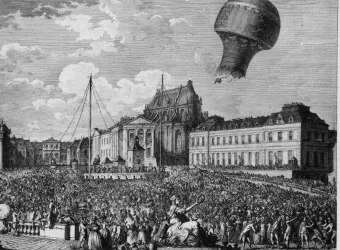Having started in Versailles in May 1789, the French Revolution saw its first concrete act here in October of the same year with the departure of the king. After a century of royal residency the Versailles legend came to an end, and Paris once again became the centre of the kingdom. A new page in the history of France was being written.

Departure of the King, 1789 6 October 1789
Tensions had been rising since the opening of the Estates General in May, and on 14 July the Bastille was stormed. On 1 October a banquet was held in the Royal Opera House. The King’s Guards had decided to hold the banquet in honour of the arrival of the Regiment of Flanders, and a sumptuous feast for 210 guests was laid out in the Opera House. Wine flowed in abundance and toasts were made to the royal family, who were cheered upon their arrival. As they stepped out onto the stage, the orchestra played O Richard, O mon roi de Grétry. In the tense climate outside the doors, many considered such strident demonstrations of monarchic loyalty the ultimate act of provocation by the monarchy, and outrage spread through Paris. Gazettes portrayed the banquet as an orgy and claimed the tricolour cockade had been trampled underfoot, and that some had even turned it over to show only the white side, the symbol of the king. Organising a banquet when the people were going hungry was a step too far. Marat, Danton and Desmoulins rallied the people to march on Versailles.
ANECDOTE
On 5 October a large crowd mainly composed of women, but also containing a few men, marched on the palace. At the time the king was hunting in Meudon and the queen was strolling in Trianon.
On 5 October a large crowd mainly composed of women, but also containing a few men, marched on the palace. At the time the king was hunting in Meudon and the queen was strolling in Trianon. As news of the march spread throughout the town the Palace gates were closed and the queen, having been warned, retreated to her apartments. Upon his return the king entrusted his protection to La Fayette, the Commander of the National Guard, who positioned his men on the Place d’Armes. The crowd arrived at the Palace at half past midnight, soaked by the rain. At 6 am, having forced open the gate of the Princes’ Courtyard, they crossed the Royal Courtyard and entered the Queen’s Apartments. Marie-Antoinette was awoken with a start and descended to the Dauphin’s Apartments, before taking refuge in the King’s Apartments. The mob had gathered in the Marble Courtyard and was demanding a royal appearance. Louis XVI promised to give them bread and to come to Paris.
At 1.25 pm the Royal cortege left Versailles. Along the way the crowd proclaimed they were bringing back “the baker with his wife and boy”! As he left, Louis XVI, who was convinced he would return, entrusted the palace to his Minister of War, La Tour du Pin, with the words “try and save my poor Versailles!” His departure, however, was final. The Palace would never again be a residence of kings.










